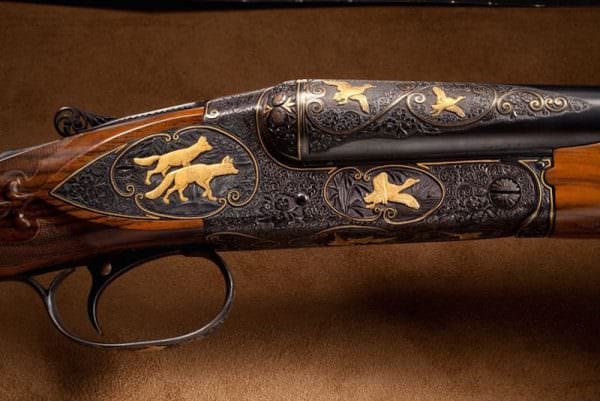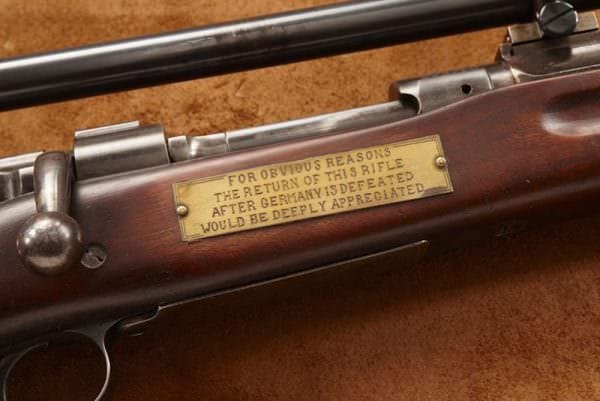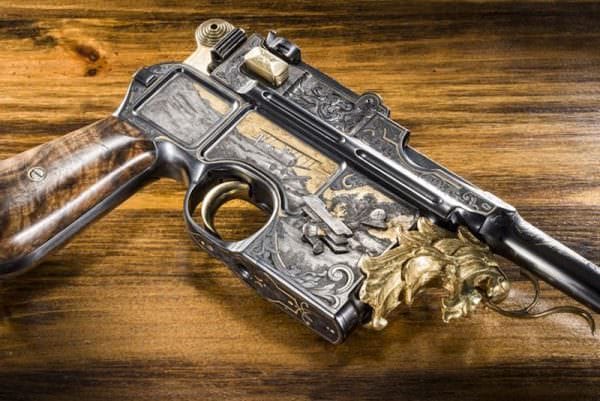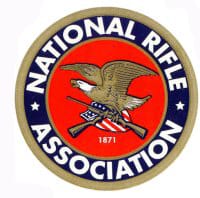Jim Supica, NRA Museums Director writes [via ammoland.com]: Few of us set out to be gun collectors. We usually start with a gun. For those fortunate enough to have grown up in a rural area or in a shooting or hunting family, it was often a .22 rifle or a shotgun, which may have been a treasured childhood possession and perhaps the first totem of adult privileges and responsibilities.

After that, for most it’s sort of like the old “betcha can’t eat just one” potato chip commercial. If one was good, two are better. You need a backup gun, a practice gun, a hunting piece or a spare or different caliber. One thing leads to another, and the next thing you know, you’re shopping for a gun safe.
There are still a few boorish gun collecting snobs out there who will sniff that a general grouping of guns acquired simply because the owner enjoys them is an “accumulation” rather than a “collection.” Such a view is regrettable and short-sighted. I’d say that if you own one more gun than you actually need, you’re a collector. Welcome!
There are different approaches to gun collecting. Some are building a shooting battery. These folks enjoy owning guns that fill different shooting niches for perceived or anticipated uses. Of course they need a .458 bolt action, because someday they might actually hunt in Africa or Alaska. Some day.

These history buff collectors will often be interested in a type of usage, perhaps military weapons, classic sporting arms or competition guns.
Many collectors choose to collect a particular type or make or model of gun. For a long time, standard advice to beginning collectors was to specialize. This is still not necessarily bad advice. The entire world of firearms is a broad and varied one, and some may flounder a bit if they plunge into it without a specific focus. The specialized collector who concentrates his efforts will be able to develop a level of expertise that will allow him to make smart purchases with an understanding of the market value of the items in his specialty, and will become adept at finding bargains in the form of scarce variations within his field that others may overlook.
In addition, much of the research in arms collecting is done by specialized collectors who add another building block to our collective knowledge by their efforts.

It also seems that a general collection is easier to eventually sell at a better price than a specialized grouping that has appeal only to a limited part of the potential gun-buying market. An extensive highly specialized collection has the potential to flood the market and depress prices within that field if it is liquidated at one time.
However you plan to build your collection, it all begins with one. Whether you’re a determined and invested collector, or an unintentional one, we’re happy to have you in the culture.
 Not ready to start your own collection but want to enjoy ours? Visit NRA Museums online at www.nramuseum.com to view online galleries, or plan a trip to visit the NRA Museum nearest you.
Not ready to start your own collection but want to enjoy ours? Visit NRA Museums online at www.nramuseum.com to view online galleries, or plan a trip to visit the NRA Museum nearest you.
Copyright, Jim Supica – used by permission. Opinions are those of the author and not necessarily those of NRA or the National Firearms Museum. Originally published in Standard Catalog of Firearms.
TOMMY GUN / THOMPSON SUBMACHINE GUN





Link to ammoland article:
https://www.ammoland.com/2017/11/gun-collecting-introduction-types-collecting-2/
Does anybody know if the Springfield in the picture above made its way back to the hands of its owner after WWII?
At least it didn’t receive a mass burial at sea.
Yes, it did. And that is a very, very famous rifle. It’s called the Hession Rifle and it is in the NRA’s National Firearms Museum. John W Hession accomplished many incredible feats with that rifle.
They just seen to accumulate.
Started in 2013 and I am now nearing 50 guns. I need a 2nd safe.😳
Not mentioned, the ultimate NRA way to raise the value of your guns
1: Buy gun
2: Encourage PotUS to sign legislation making future copies illegal
3: falsely claim to fight for repeal of this law
4: Collect donations that would be used by people actually fighting it and do nothing
5: Profit?
A “collection” is useless crap of no logical value. Only a very few firearms would fall into that category.
Get a part-time (or full-time) job in a pawn shop that has a generous employee discount.
Put your gun geek skills to use and start building your collection.
(There’s an old saying in the pawn biz that true, and I know it’s true because I’ve seen it with my own two eyes time and time again – “You never know what will walk in that front door of your shop and drop in your lap.”)
What, not one picture of a black plastic gun, all I seen was ugly looking engraved steel and polished wood, yuk…….lol I’m giving Glock n AR guys fits. …. I like guns, all guns. Pitty gun enthusiast(nut) has such a bad rap.
Three rules for gun collecting:
1. Buy quality. Quality firearms had a higher value when they were first made, and there are fewer quality guns being made every year. Quality retains value. Generally speaking, guns with aluminum parts (eg, magazine, trigger bow, etc) don’t appreciate much. Plastic doesn’t appreciate at all, unless we’re talking of something like the very first Glock 17, with papers to prove it. Quality guns in rare(r) configurations appreciate better than the more common variants. eg, a pre-war Winchester Model 70 in .220 Swift commands a much higher value than a Model 70 in .30-06.
2. “All original” commands a higher price. Know the provenance and have it documented if the gun has some historical significance. Getting factory letters helps; better yet to research what you’re buying before you buy it.
3. Take care of it.
It’s not difficult. 80 years ago, a Winchester Model 70, 94, 21 or 12 were working guns. The ones that had higher-end features, that were manufactured in more uncommon chamberings, and that were taken care of have appreciated quite nicely since then.
I don’t have a collection
I have an Arsenal
All modern military “ assault weapons”
One to serve as a designated marksmanship rifle
One with a bipod, drum magazine and bump stock for squad automatic weapon
Now to form a militia and take over my little town after the end of the world as we know it!
Arsenals manufacture weapons, armories store them.
You have an armory.
I have a “First Edition” SIG P290 with serial number lower than 20. I don’t really care for the gun. I’ve only shot it twice. It isn’t much fun to shoot and it pretty much just sits in the safe. I’m trying to decide whether to sell it and get something else I like better or keep it as a collectible because it has a low number and maybe will become valuable someday. I know it’s speculation, but I wonder what others think.
Comments are closed.